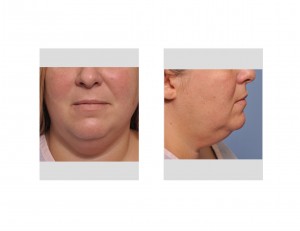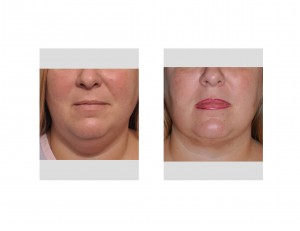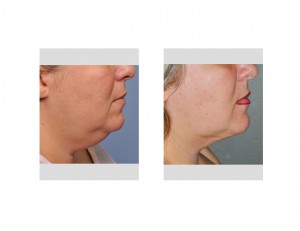Background: The heavy or fat neck is a common problem in younger patients who often have a concomitant body fat issue. The neck is often a symptom of the patient’s overall weight and its size may yo-yo very much like their body does with cyclical weight changes. But for many of these patients, weight loss is not the total solution for their heavy neck and rarely results in a conpletely satisfying neck change.
Unlike the older patient, patients under 45 or 50 years of age rarely have signficant skin excess with their full necks. While there is some skin excess to be sure, it is not a large amount and only appears that way with a sagging convex neck profile due to the amount of fat. Their skin is almost always thick with reaonable elasticity.
Liposuction of the neck is a very common procedure and is done in conjunction with other procedures (e.g., facelift) as much as it is done by itself. It is an above the platysma muscle cannula technique for subcutaneous fat removal. There are other fat compartments, which can be significant, that are below the platysma muscle and are not accessible by cannula extraction. If present, these need to be removed as part of a more advanced neck contouring procedure known as a submentoplasty.
Liposuction technology has advanced over the past fifteen years, primarily in how the fat is mobilized prior to suction evacuation. One of these technologic advancements has been the use of fiberoptic cables to deliver energy (heat) directly to the fat layer. This has become widely know as laser liposuction, with the brand name Smartlipo as the most recognizeable market name. While often percieved as ‘zapping’ fat, this is not how it really works. It is more about raising the internal temperature to a level that is considered damaging to fat cells. This is generally in the range up to 45 or 46 degrees C. At this temperature level, the collagen in the skin is also induced to shrink and contract, theoretically aiding the necessary skin contraction needed for a good contour result.



Case Highlights:
• Liposuction of the full or fat neck can effectively reduce the fat content above the plastysma muscle but the quality of the result will ultimately be determined by the degree of skin contraction.
• The type of neck liposuction performed may offer improved results if it aids in helping the skin to contract. Smartlipo provides a dermal heating effect that adds a theoretical effect on skin shrinking.
• Recovery after neck liposuction is a process that, while some immediate effect is evident, takes several months to see the final result.
Dr. Barry Eppley
Indianapolis, Indiana


